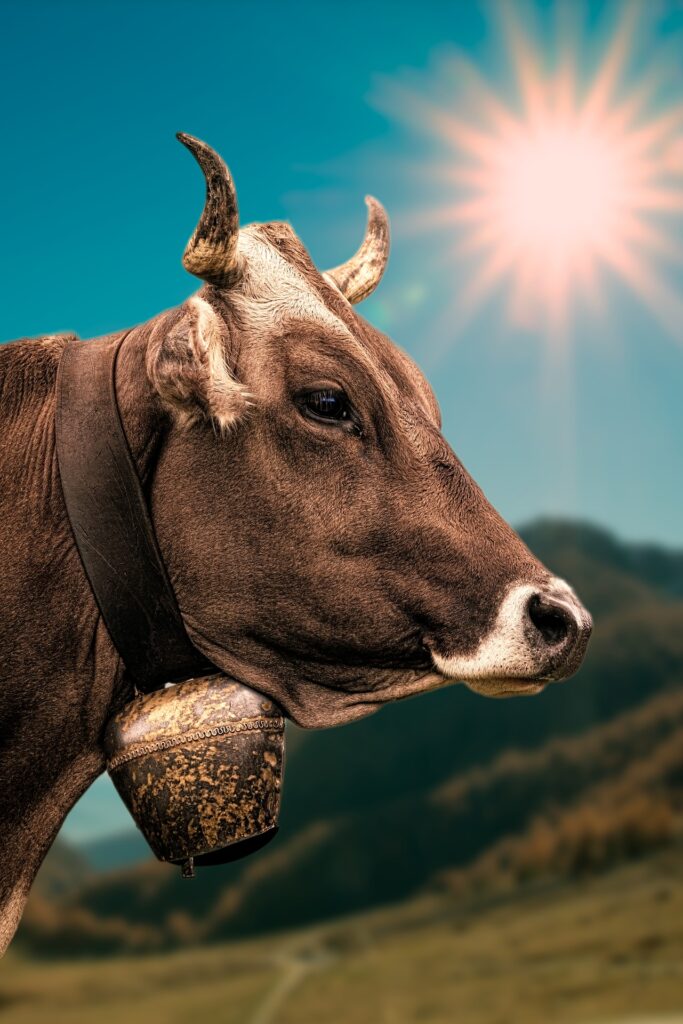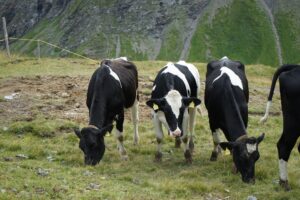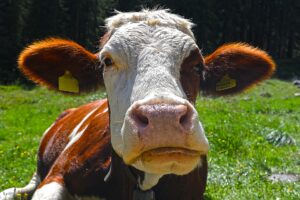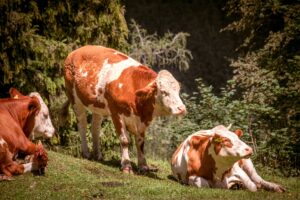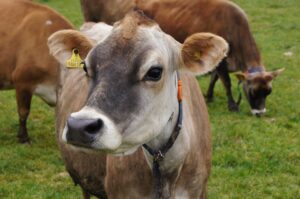The cow as ambassador of Switzerland
The cow, is a symbol in Switzerland and can be found everywhere in different forms: in addition to seeing it grazing a bit ‘everywhere in the typical Swiss landscapes, we find it in stores in the form of souvenirs, in many paintings, in many advertisements, or in the form of toy …
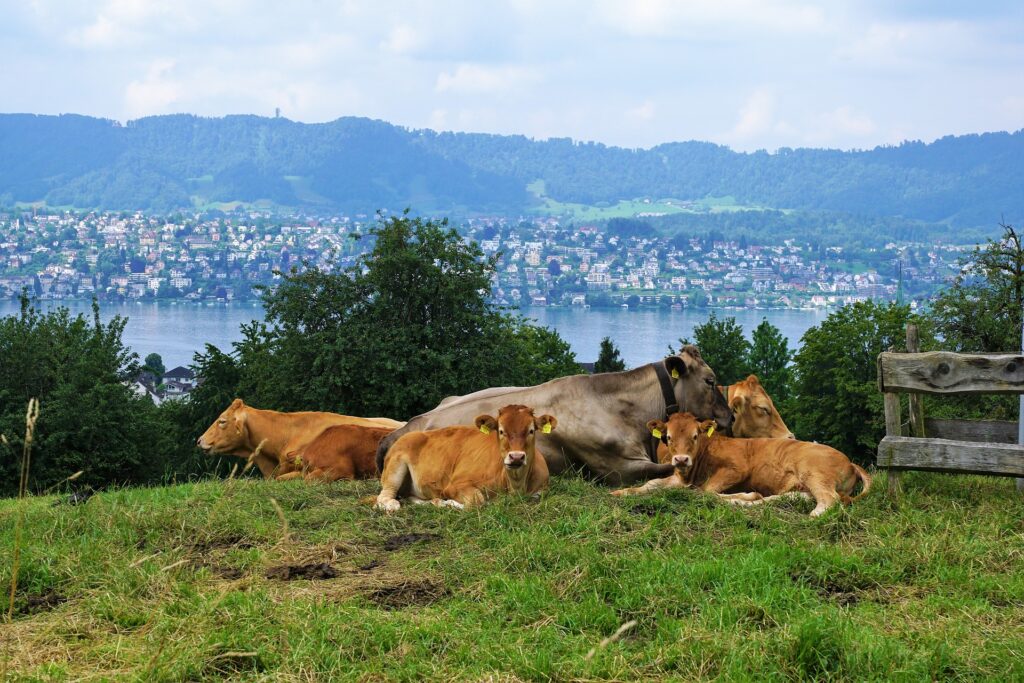
In Switzerland, the cow is much more than just a farm animal — it is a true national symbol. You’ll find it everywhere, set against the lush green and mountainous landscapes that define the Swiss imagination. But its presence extends far beyond the pastures: cows feature prominently in souvenirs, advertisements, toys, artworks, and home decorations found throughout Swiss shops and homes.
Currently, the country is home to about 1.4 million cattle, of which around 700,000 are dairy cows. The rest are calves, bulls, and steers, raised for various purposes. Most Swiss cattle belong to two main breeds:
-
The Simmental Red Pied (about 46%), known for its hardiness and good yields in both milk and meat.
-
The Swiss Brown (Brown Alpine, about 41%), renowned for the quality of its milk, especially suitable for making alpine cheeses.
Cattle breeds in Switzerland are classified based on their primary use into:
-
Dairy breeds
-
Beef breeds
-
Dual-purpose breeds (milk and meat)
The Swiss cow also holds a strong place in the country’s cultural and symbolic world. In 2018, the Swiss National Museum in Zurich held an entire exhibition entitled Beastly Swiss, where the cow was presented as one of four animal ambassadors of national identity, alongside the Saint Bernard dog, the marmot, and the ibex. These animals embody the spirit of the Alps, rural life, resilience, and a deep connection to nature — all key parts of the Swiss DNA.
In short, the cow is not just a tourist icon, but a true emblem of Swiss identity, culture, and rural economy.
Swiss Cattle Breeds: A Heritage of Diversity and Tradition
The cows that graze in the pastures and alpine meadows of Switzerland are far from all the same. Each breed has its own unique characteristics, origins, and a specific role in the country’s agricultural economy. Some are native and deeply tied to the Swiss landscape, while others have been imported and have adapted well to the local climate and terrain. Let’s explore the main cattle breeds found in Switzerland:
Brown Swiss (Braunvieh)
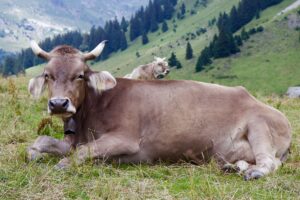
Originally from central Switzerland, this dual-purpose breed is prized for its hardiness and rich, nutritious milk. Exported centuries ago, it gave rise to the famous Brown Swiss breed in the United States.
Grey Alpine (Tiroler Grauvieh)
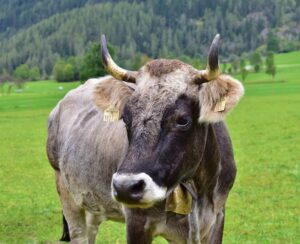
From the central Alpine arc (spanning Switzerland, Tyrol, and South Tyrol), this hardy, dual-purpose breed is well suited for high-altitude grazing.
Holstein-Friesian
Jersey
Hérens and Evolène
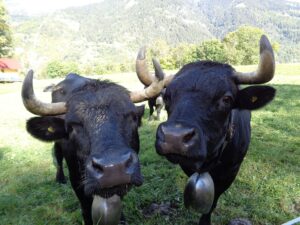
The Hérens and the Évolène are two distinct breeds: scientific studies have shown that these breeds, contrary to others, did not arrive in Switzerland with the Celts, but came from Italy at an earlier time.
These cows are robust and frugal, and are particularly suited to grazing on steep alpine meadows.
The Hérens, is a mountain breed originally from the Valais region that enjoys particular consideration in Switzerland. It has a dark brown or black coat, and imposing horns: it has a combative temperament, which it often displays in duels held to establish a hierarchy. Clashes occur naturally within the herd.In Valais and Aosta Valley (Italy), tournaments are organized according to age and weight.
The Évolène is a dual-purpose breed with a reddish or black coat and carries a white star on its forehead typical of the breed. Its tail, belly, legs and back may also show white spots. It has an excellent resistance, good milk production and very good slaughtering performance.
Highlander
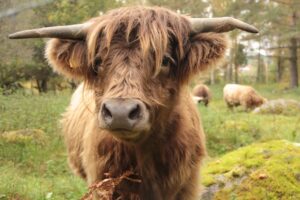
Native to the Scottish highlands, it is a beef breed of cattle. This cow has coats of different colors (red, yellow, black white …) is small in size with a good attitude to calving, robust and undemanding.
The thick furry coat allows the animals to withstand the coldest temperatures, and allows them to retain body heat while avoiding the formation of excess fat. Studies have shown that their meat has about 38% less fat than other cattle breeds and cholesterol is 4% lower.
Charolais
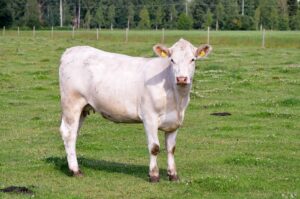
Native to eastern France (more precisely from the department of Saône-et-Loire in Burgundy), it is a beef cow with a white or white/cream coat and large size. In Switzerland it is raised on the central plateau, in the Pre-Alps, in Canton Jura and Canton Ticino.
Limousin
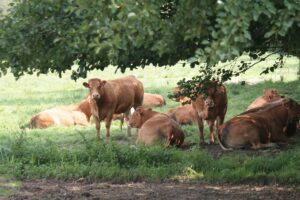
Originally from southwestern France, it is a beef breed with a red to wheat colored coat with characteristic lightening on the eyes, mouth and feet. In Switzerland, it is bred everywhere.
Angus
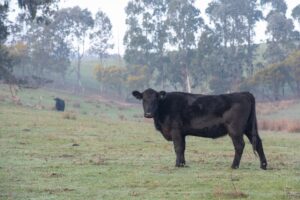
Native to northeastern Scotland, it is a naturally hornless meat breed with a black or red coat of medium size and high meat yield. In Switzerland there are about 15,000 examples.
Rare Swiss cattle breeds
In Switzerland there are 35 documented breeds, of which only 5 have survived: the Original Swiss Brown Swiss, the Swiss Simmental, the Hérens and Evolène cattle and the Rhaetian Grey cattle.
These last two breeds, together with the Hinterwald cattle, are protected by ProSpecieRara because they are threatened with extinction.
The Hinterwald cattle is the smallest dual-purpose cattle breed in Central Europe and originates from the Black Forest. These cattle are mainly found in central Switzerland, in the Emmental and in the Bernese Oberland. They are long-lived, hardy, and the fattening calves have a good slaughter yield and fine-fibered meat. They also have an excellent milk yield.
The Rhaetian Grey cattle is a dual-purpose breed. In the past it was widespread in the Graubünden Alps, but with the establishment of the Brown Swiss cow, the Rhaetian disappeared from Swiss territory. Fortunately, a small number of animals remained in the Tyrol (Austria) and in 1985 ProSpecieRara and a few enthusiastic breeders succeeded in reintroducing this species into the Swiss landscape.
The Evolène cow is a dual-purpose breed native to the Valais region with good stamina and longevity that offers good milk production and an excellent slaughter yield. Today these cows can be found in the Upper Valais, Bernese and other regions of Switzerland.
The alpine season as candidate for the intangible cultural heritage of UNESCO
Mountain pasture and transhumance
The alpine pasture begins in the summer from May/June and has very ancient origins in Switzerland, where it seems that already in 4000 B.C. people used the pastures beyond the border of the forest until the end of September/October, when the herds are brought back to the valley for purely climatic reasons. The mountain grass and the good air allow the cows to become stronger and more resistant to infections and to provide excellent milk to produce the delicious alpine cheeses.
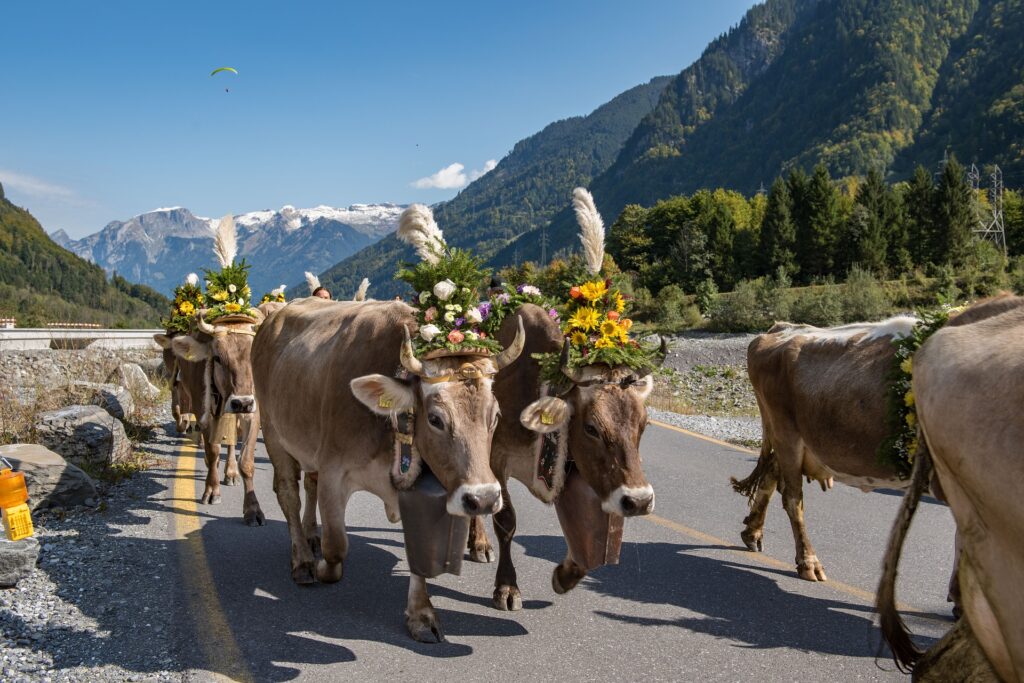
The production of cheese during the summer was used to preserve the milk and to stock up for the winter months.
The descent from the mountain pastures is one of the most famous alpine feasts to which are dedicated great celebrations. For the occasion, the animals are adorned with wreaths of flowers and cowbells and also the farmers march in traditional costumes leading the cattle through the streets of the village until they reach the “winter” stables. Often in the villages are organized markets and / or local festivals where you can taste and buy cheese and other local products, listen to music and traditional songs etc..
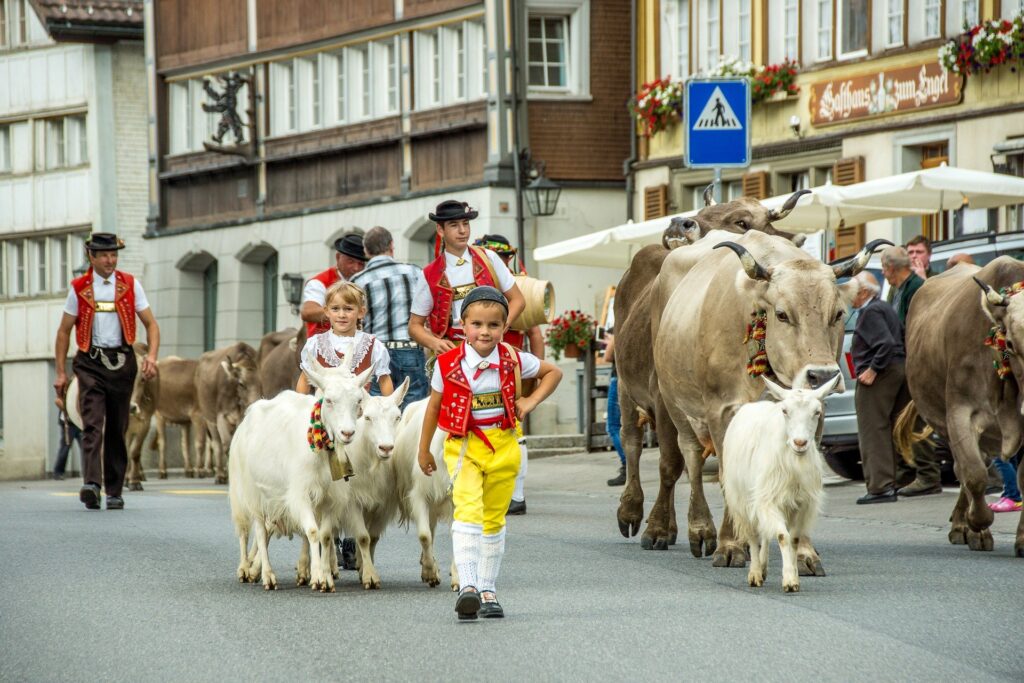
Cowbells
Cowbells date back to the beginnings of the practice of cattle breeding: this showed that the animal was domesticated and was not exclusive to cows but was also used for horses, goats, etc. The sound of cowbells also makes it easier for the shepherd to find the cattle in the fog, at night, or on hilly pastures. The regular sound of the cowbells highlights the calmness of the herd while a sudden ringing signals danger.
